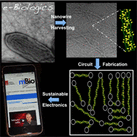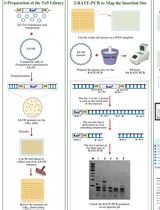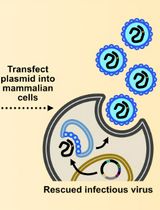- EN - English
- CN - 中文
Conditional Knockdown of Proteins Using Auxin-inducible Degron (AID) Fusions in Toxoplasma gondii
在刚地弓形虫中通过融合生长素诱导的降解因子(AID)进行蛋白质条件性敲减
发布: 2018年02月20日第8卷第4期 DOI: 10.21769/BioProtoc.2728 浏览次数: 17970
评审: David CisnerosNoelia LanderAnonymous reviewer(s)

相关实验方案
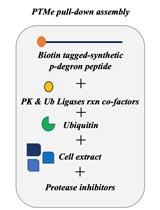
一种翻译后修饰增强的牵引法,用于研究 Degron 结构域和相关的蛋白质降解复合物
Pierluigi Scalia and Stephen J. Williams
2023年09月20日 2388 阅读
Abstract
Toxoplasma gondii is a member of the deadly phylum of protozoan parasites called Apicomplexa. As a model apicomplexan, there is a great wealth of information regarding T. gondii’s 8,000+ protein coding genes including sequence variation, expression, and relative contribution to parasite fitness. However, new tools are needed to functionally investigate hundreds of putative essential protein coding genes. Accordingly, we recently implemented the auxin-inducible degron (AID) system for studying essential proteins in T. gondii. Here we provide a step-by-step protocol for examining protein function in T. gondii using the AID system in a tissue culture setting.
Keywords: Auxin (生长素)Background
Auxins are a class of phytohormones that signal by targeting certain proteins for proteasomal degradation in plants (Teale et al., 2006). Kohei Nishimura et al. had the clever idea of transferring components of this plant-specific signaling system to other eukaryotes for conditional regulation of proteins of interest (POIs), creating the auxin-inducible degron (AID) system (Nishimura et al., 2009). This system has since been adapted successfully in several eukaryotes, including the apicomplexan parasite Plasmodium (Kreidenweiss et al., 2013; Philip and Waters, 2015). Just two transgenic components are needed to implement this system, a plant auxin receptor called transport inhibitor response 1 (TIR1) and a POI tagged with an AID. Treatment with an auxin (e.g., 3-indolacetic acid/IAA) activates the SCFTIR1 ubiquitin ligase complex which exclusively targets AID-tagged proteins for ubiquitin-dependent proteasomal degradation (Figure 1). We recently engineered an RHΔhxgprtΔku80 line of T. gondii to stably express TIR1 from Oryza sativa (RH TIR1-3FLAG) (Brown et al., 2017; Long et al., 2017a). In this background, we were able to use CRISPR/Cas9 genome editing (Shen et al., 2014; Sidik et al., 2014; Shen et al., 2017) to tag essential T. gondii genes of interest with AID-3HA or mini-AID(mAID)-3HA, regulate their expression with auxin, and identify phenotypes associated with their loss (Brown et al., 2017; Long et al., 2017a and 2017b).
There are several advantages for using this system for conditional knockdowns in T. gondii. First, POI-AID fusions are expressed from their endogenous promoters, maintaining normal expression timing and levels. Second, auxin is non-toxic to parasite and host cell cultures at 1 mM but can function as low as ~50 µM. Third, auxin is added only when knockdown is desired and is commercially available for less than $5 USD per gram. Last and most importantly, POI-AID fusions are fully degraded in as little as 15 min following auxin treatment. For these reasons, we were compelled to elaborate on our published methods in this detailed protocol to facilitate the establishment of this system in other apicomplexan laboratories. 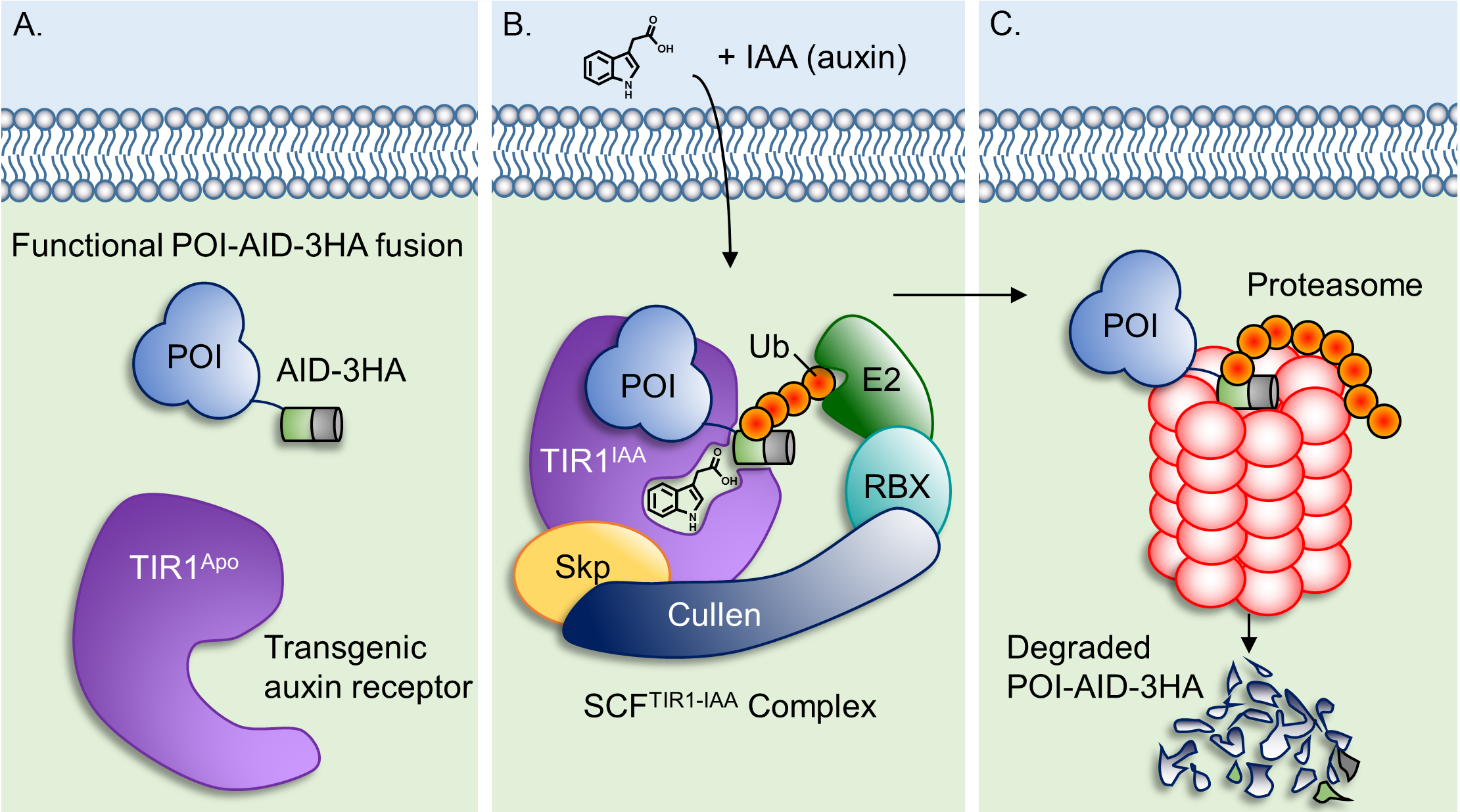
Figure 1. Model of the auxin inducible-degron system. A. In the absence of auxin, the plant auxin receptor TIR1 is in its inactive ‘Apo’ state, allowing the protein of interest (POI)-AID-3HA fusion to express and function normally. B. Auxin-bound TIR1 assembles into an active Skp-Cullen-F Box (SCFTIR1) ubiquitin ligase complex where it recognizes and polyubiquitinates AID. C. The polyubiquitin modification targets POI-AID-3HA for proteasomal degradation.
Materials and Reagents
- Microcentrifuge tubes (1.7 ml)
- PCR tubes (0.2 ml)
- T-25 and T-175 culture flasks (Corning, catalog numbers: 430639 , 431080 )
- 96-well tissue culture plates (TPP, catalog number: 92696 )
- 24-well plates (TPP, catalog number: 92024 )
- 22 G blunt needles (CML Supply, catalog number: 901-22-100M )
- 3.0 µm pore size 47 mm filter membrane (GE Healthcare, Whatman, catalog number: 111112 )
- 10 ml syringes (BD, catalog number: 309695 )
- 50 ml polystyrene conical vials (Fisher Scientific, catalog number: 05-539-10 )
- 1 L Stericup Filter Units (Merck, catalog number: SCVPU11RE )
- 13 mm cell scrapers (TPP, catalog number: 99002 )
- 47 mm polycarbonate syringe filter holder (GE Healthcare, Whatman, catalog number: 420400 )
- Filter paper for Western blot wet transfer (GE Healthcare, Whatman, catalog number: 3030-917 )
- Nitrocellulose membrane (GE Healthcare, Amersham, catalog number: 10600003 )
- Petri dishes (Sigma-Aldrich, catalog number: P5606 )
- Pipette tips for Gilson pipettes (Gilson, catalog numbers: F171101 , F171301 , F171501 )
- Sterile serological pipettes (5 ml, 10 ml, 25 ml)
- Electroporation cuvettes 4 mm gap (BTX, catalog number: 45-0126 )
- pSAG1::Cas9-U6::sgUPRT plasmid (Addgene, catalog number: 54467 ) (Shen et al., 2014)
- pYFP-AID-3HA, Floxed HXGPRT plasmid (Addgene, catalog number: 87260 ) (Long et al., 2017a)
- pYFP-mAID-3HA, Floxed HXGPRT plasmid (Addgene, catalog number: 87259 ) (Brown et al., 2017)
- T. gondii line RH TIR1-3FLAG (genotype: RHΔhxgprtΔku80; TUB1:TIR1-3FLAG, SAG1:CAT) (Brown et al., 2017; Long et al., 2017a)
- NEB5α chemically-competent E. coli with SOC medium (New England Biolabs, catalog number: C2987I )
- Human foreskin fibroblasts (HFF) (ATCC, catalog number: SCRC-1041 )
- Q5 Site-Directed Mutagenesis Kit with chemically competent E. coli (New England Biolabs, catalog number: E0554S )
- Mutagenesis primers for reprogramming pSAG1::Cas9-U6::sgUPRT (IDT, 25 nmole, standard desalting)
- 2x SDS-PAGE sample buffer (Sigma-Aldrich, catalog number: S3401 )
- 1 kb DNA ladder (New England Biolabs, catalog number: N3232 )
- Agarose (Fisher Scientific, catalog number: BP160 )
- SDS-PAGE 4-15% gradient Tris-glycine polyacrylamide gels (Bio-Rad Laboratories, catalog number: 4561086 )
- 6x Gel Loading Dye (New England Biolabs, catalog number: B7025 )
- LB broth (BD, catalog number: 244610 )
- Ampicillin (Sigma-Aldrich, catalog number: A9518 )
- Plasmid miniprep kit (Macherey-Nagel, catalog number: 740588 )
- M13 Reverse universal primer (5’-ACAGGAAACAGCTATGAC) (Genewiz)
- Q5 DNA Polymerase (New England Biolabs, catalog number: M0491 )
- dNTPs 10 mM each (New England Biolabs, catalog number: N0447 )
- Gene of interest tagging primers for amplifying (m)AID-3HA, Floxed HXGPRT tagging cassette with short homology flanks (IDT, 25 nmole, standard desalting)
- Gene of interest diagnostic tagging primers (IDT, 25 nmole)
- Agarose Gel and PCR Cleanup Kit (Macherey-Nagel, catalog number: 740609 )
- Trypsin-EDTA (Sigma-Aldrich, catalog number: T3924 )
- ATP (Sigma-Aldrich, catalog number: A6419 )
- Glutathione (Sigma-Aldrich, catalog number: G6013 )
- Mycophenolic acid (Sigma-Aldrich, catalog number: M3536 )
- Xanthine (Sigma-Aldrich, catalog number: X4002 )
- Proteinase K (Sigma-Aldrich, catalog number: P2308 )
- Taq polymerase (New England Biolabs, catalog number: M0273 )
- Ethanol (EtOH) (Pharmco-AAPER, catalog number: 11100020 )
- GelRed nucleic acid stain (Biotium, catalog number: 41001 )
- Licor anti-mouse 800CW secondary antibody (LI-COR, catalog number: 925-32210 )
- Licor anti-rabbit 680RD secondary antibody (LI-COR, catalog number: 925-68071 )
- Mouse anti-HA monoclonal antibody (BioLegend, catalog number: 901501 )
- Non-fat powdered milk (Nestle Carnation)
- Rabbit anti-Aldolase (T. gondii) (Starnes et al., 2009) or other T. gondii loading control antibody
- Tris base (Sigma-Aldrich, catalog number: T6066 )
- Glacial acetic acid (Fisher Scientific, catalog number: A38-500 )
- 0.5 M EDTA pH 8.0 (Merck, catalog number: 324504 )
- Boric acid (Sigma-Aldrich, catalog number: B6768 )
- Glycine (Sigma-Aldrich, catalog number: G7128 )
Note: This product has been discontinued. - Sodium dodecyl sulfate (SDS) (Sigma-Aldrich, catalog number: L5750 )
- Methanol (Fisher Scientific, catalog number: A412P )
- Potassium chloride (KCl) (Sigma-Aldrich, catalog number: P5405 )
- Sodium chloride (NaCl) (Fisher Scientific, catalog number: S271 )
- Sodium phosphate dibasic (Na2HPO4) (Sigma-Aldrich, catalog number: S3264 )
- Potassium phosphate dibasic (K2HPO4) (Sigma-Aldrich, catalog number: P8281 )
- Tween-20 (Sigma-Aldrich, catalog number: P2287 )
- Dulbecco’s Modified Eagle’s Medium (DMEM) (Thermo Fisher Scientific, GibcoTM, catalog number: 12100046 )
- Sodium bicarbonate (Sigma-Aldrich, catalog number: S5761 )
- 200 mM L-glutamine (Thermo Fisher Scientific, GibcoTM, catalog number: 25030149 )
- 10 mg/ml gentamicin (Thermo Fisher Scientific, GibcoTM, catalog number: 15710072 )
- Characterized fetal bovine serum (FBS) (GE Healthcare, catalog number: SH30071.01HI )
- Hanks’ balanced salt solution (Sigma-Aldrich, catalog number: H9269 )
- HEPES (Sigma-Aldrich, catalog number: H3375 )
- EGTA (Merck, catalog number: 324626 )
- EDTA (Merck, catalog number: 324504 )
- Potassium phosphate monobasic (KH2PO4) (Sigma-Aldrich, catalog number: P5655 )
- Magnesium chloride (MgCl2) (Sigma-Aldrich, catalog number: M4880 )
- Calcium chloride dihydrate (CaCl2·2H2O) (Sigma-Aldrich, catalog number: C5080 )
- 3-indoleacetic acid (IAA/auxin) (Sigma-Aldrich, catalog number: I2886 )
- Agar (Fisher Scientific, catalog number: BP1423 )
- 10x Tris-Acetate-EDTA (TAE) buffer (see Recipes)
- 10x Tris-Borate-EDTA (TBE) buffer (see Recipes)
- 10x SDS-PAGE running buffer (see Recipes)
- 10x protein transfer buffer (see Recipes)
- 1x protein transfer buffer (see Recipes)
- 10x phosphate buffered saline (PBS) (see Recipes)
- Phosphate buffered saline + Tween-20 (PBST) (see Recipes)
- PCR lysis buffer (see Recipes)
- D10 medium (see Recipes)
- Hank’s balanced salt solution with HEPES and EGTA (HHE) (see Recipes)
- 0.1 M KPO4 buffer pH 7.6 (for Cytomix buffer) (see Recipes)
- Cytomix electroporation buffer pH 7.6 (Soldati and Boothroyd, 1993) (see Recipes)
- 500 mM 3-indoleacetic acid (IAA/auxin) (1,000x Stock) (see Recipes)
Equipment
- Autoclave (Steris, model: SG-120 )
- Benchtop centrifuge with 15 ml and 50 ml conical vial holders (Eppendorf, model: 5810 R )
- Biological safety cabinet (Baker, model: SterilGuard® II )
- CO2 incubator (Thermo Fisher Scientific, Thermo ScientificTM, model: FormaTM 310 )
- Detergent free pyrex glassware and stir bars for media preparation
- Electroporator (BTX, model: ECM 830 )
- Gel documentation system (Bio-Rad Laboratories, model: Gel DocTM XR+ )
- Incubating orbital shaker (VWR, model: Model 3500I )
- Inverted phase contrast microscope (Nikon Instruments, model: Eclipse TS100 )
- Hemacytometer (Sigma-Aldrich, model: Bright-LineTM )
- Licor Odyssey imaging system (LI-COR, model: Odyssey® CLx )
- Microcentrifuge (Eppendorf, model: 5417 R )
- Microvolume spectrophotometer (Thermo Fisher Scientific, Thermo ScientificTM, model: NanoDropTM One )
- Microwave (VWR, catalog number: 75856-526)
Manufacturer: Argos Technologies, catalog number: 111092 . - Pipet aid (Thermo Fisher Scientific, Thermo ScientificTM, model: S1 )
- Pipettes (Pipetman, Gilson, models: P2 , P20 , P200 , P1000 )
- Protein wet transfer blotting apparatus (Bio-Rad Laboratories, model: Mini Trans-Blot® )
- Refrigerator Freezer (Thermo Fisher Scientific, Thermo ScientificTM, catalog number: 10ECEETSA )
- SDS-PAGE electrophoresis apparatus (Bio-Rad Laboratories, model: Mini-Protean Tetra Cell )
- Standard orbital shaker (VWR, model: Model 1000 )
- Thermal cycler (Thermo Fisher Scientific, Applied BiosystemsTM, model: VeritiTM 96-well )
Software
- Google Chrome (Google) or other web browsing software
- Snapgene (Snapgene) or other plasmid viewing software
- Image studio lite (LI-COR) or other gel analysis software
- Axiovision (Carl Zeiss Microscopy) or other cellular imaging software
- ImageJ (Developed by Wayne Rasband) or other image quantification software
- GraphPad Prism (GraphPad Software Inc.) or other graphing and statistical analysis software
Procedure
文章信息
版权信息
© 2018 The Authors; exclusive licensee Bio-protocol LLC.
如何引用
Brown, K. M., Long, S. and Sibley, L. D. (2018). Conditional Knockdown of Proteins Using Auxin-inducible Degron (AID) Fusions in Toxoplasma gondii. Bio-protocol 8(4): e2728. DOI: 10.21769/BioProtoc.2728.
分类
微生物学 > 微生物遗传学 > 诱/突变
分子生物学 > 蛋白质 > 靶向降解
您对这篇实验方法有问题吗?
在此处发布您的问题,我们将邀请本文作者来回答。同时,我们会将您的问题发布到Bio-protocol Exchange,以便寻求社区成员的帮助。
Share
Bluesky
X
Copy link


